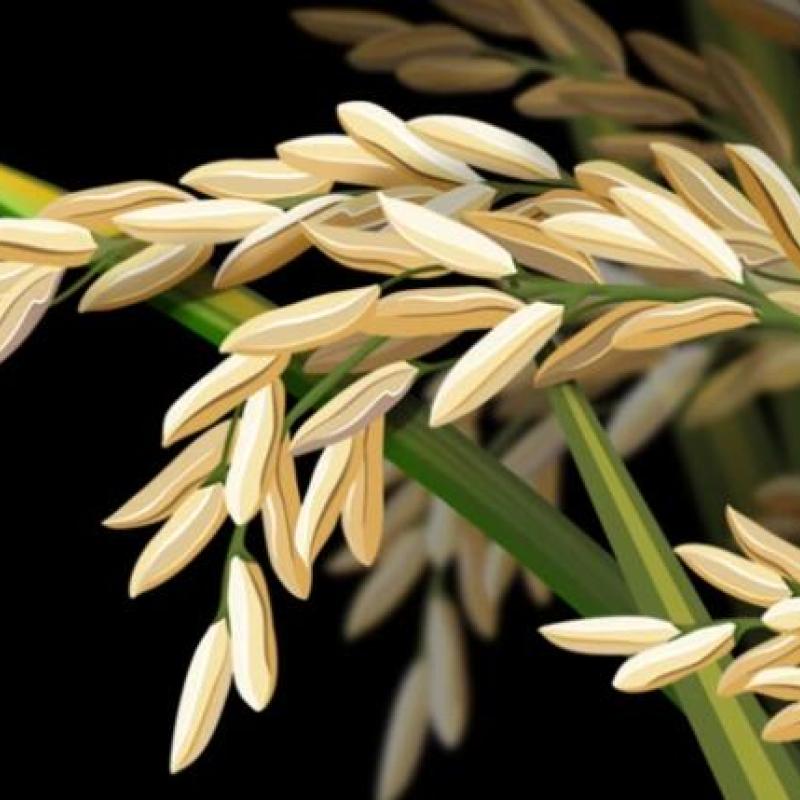Common name: CLOPYRALIDChemical name: 3,6-dichloropyridine-2-carboxylic acidMolecular formula: C6H3Cl2NO2Structural formula: Molecular weight: 192CAS No. : 1702-17-6Product description:Clopyralid is a systemic phytohormone-type herbicide, which is a product of Dow Company in the United States. It has good herbicidal effects and strong selectivity. Entered the U.S. market in 1987 to control annual or perennial broad-leaved weeds in corn and sugar beet fields.
Contacter maintenant
Common name: ImazethapyrMolecular formula: C15H19N3O3Structural formula:Molecular weight: 289.33CAS No. : 81335-77-5Product description:Imazethapyr is a kind of organic heterocyclic herbicide, which belongs to imidazolinone compound, also known as Prosad, Imidazolium, Mizuoxazole, Prosthet, and Imazethapyr. Its isopropylamine salt is suitable for all weeds. It has excellent herbicidal activity against Cyperaceae weeds, annual and perennial monocotyledonous weeds, broad-leaved weeds and weeds.
Contacter maintenant
Common name: FluroxypyrChemical name: 4-amino-3,5-dichloro-6-fluoro-2-pyridyloxyacetic acidMolecular formula: C7H5Cl2FN2O3Structural formula:Molecular weight: 255.03CAS No. : 69377-81-7 Product description:Fluroxypyr is an organic heterocyclic selective systemic and conductive post-emergence herbicide. Its general name is fluroxypyr, and other names include Zhipinling. It is suitable for the control of wheat, barley, corn and other gramineous crops. Various broad-leaved weeds.
Contacter maintenant
Common name: TriclopyrChemical name: [(3,5,6-trichloropyridin-2-yl)oxy]acetic acidMolecular formula: C7H4Cl3NO3Structural formula:Molecular weight: 256.47CAS No. : 55335-06-3Physical and chemical properties:The pure product is a white crystalline solid. m.p.148~150℃, decomposition temperature 290℃. The vapor pressure is 1.68×10-4Pa. It is soluble in organic solvents such as ethanol, and its solubility in water at 25°C is 430~440mg/L.
Contacter maintenant
Common name: ImazapicChemical name: 3-Pyridinecarboxylic acid, 2-[4,5-dihydro-4-methyl-4-(1-methylethyl)-5-oxo- 1H-imidazol-2-yl]-5-methyl-Molecular formula: C14H17N3O3Structural formula:Molecular weight: 275.3CAS No. : 104098-48-8Product description:Imazapic is a sulfonylurea systemic conduction typepost-emergence selective herbicide. After the stems and leaves are treated, they can be absorbed by the stems, leaves and roots of weeds.
Contacter maintenant
Common name: ImazamoxChemical name:(RS)-2-(4-isopropyl-4-methyl-5-oxo-2-imidazolin-2-yl)-5-methoxymethylnicotinic acidMolecular formula: C15H19N3O4Structural formula:Molecular weight: 305.33CAS No. : 114311-32-9 Physical and chemical properties:This product is solid. m.p.166~166.7℃, vapor pressure<1.3×10-5Pa. The solubility is: methylene chloride 14.3g/100L, methanol 6.68g/100L, acetone 2.93g/100L, acetonitrile 1.85g/100L, ethyl acetate 1.02g/100L, n-hexane 0.0006g/100L, partition coefficient 5.36 (25℃) ).
Contacter maintenant
Common name: GlufosinateChemical name: 2-Amino-4-[hydroxy(methylphosphonoyl)]butanoic acidMolecular formula: C5H18N3O4PStructural formula:Molecular weight: 215.19CAS No. : 77182-82-2Product description:Glufosinate-ammonium, also known as glufosinate, is a non-selective foliar spray of organophosphorus herbicide. It was first synthesized and developed by the Federal German Hoechst Chemical Company in 1979.
Contacter maintenant
Common name: NICOSULFURONChemical name: 1-(4,6-Dimethoxypyrimidin-2-yl)-3-(3-dimethylcarbamoyl-2-pyridylsulfonyl)urea 2-(4,6-Dimethoxypyrimidin-2-ylcarbamoylsulfamoyl)-N,N-dimethylnicotinamideMolecular formula: C15H18N6O6SStructural formula:Molecular weight: 410.4CAS No. : 111991-09-4Product description:Nicosulfuron is a systemic and conductive herbicide, which can be absorbed by the stems, leaves and roots of plants and quickly transmitted.
Contacter maintenant
Glufosinate is a wide-spectrum herbicide that is used to govern essential weeds consisting of morning glories, hemp sesbania (sesbania bispinosa), pennsylvania smartweed (polygonum pensylvanicum) and yellow nutsedge just like glyphosate.
Contacter maintenant
Alachlor is an herbicide from the chloroacetanilide family. It is an odorless, white solid. The greatest use of alachlor is for control of annual grasses and broadleaf weeds in crops. Use of alachlor is illegal in the European Union and no products containing alachlor are currently registered in the United States.Its mode of action is elongase inhibition, and inhibition of geranylgeranyl pyrophosphate (GGPP) cyclisation enzymes, part of the gibberellin pathway. Common name: AlachlorChemical name: 2-chloro-N-(2,6-diethylphenyl)-N-(methoxymethyl)acetamide; Molecula
Contacter maintenant
usage:Amide selective, pre-emergence herbicide, can be applied to corn, cotton, soybean, peanut, rape, potato, sugarcane, sesame, sunflower and legume, cruciferous, nightshade, compositae, umbelliferae, etc. Control annual grass weeds in vegetable fields and orchards, and a single application keeps crops free from weed damage throughout the growing period. Not effective against perennial weeds.Common name: AcetochlorChemical name: 2-chloro-N-(ethoxymethyl)-N-(2-ethyl-6-methylphenyl)acetamideMolecular formula: C14H20ClNO2Structural formula:Molecular weight: 269.77CAS No.
Contacter maintenant
Common name: Metsulfuron-MethylChemical name: 2-(4-methoxy-6-methyl-1,3,5-triazin-2-ylcarbamoylsulfamoyl) benzoic acidMolecular formula: C14H15N5O6SStructural formula:Molecular weight: 381.36CAS No. : 74223-64-6Product description:Metsulfuron is an ultra-low dosage sulfonylurea herbicide for controlling medium-broad-leaved weeds in cereals. It can be transferred upward and downward in the plant body and used as a herbicide before and after wheat sprouts.Physical and chemical properties:The pure product is a white crystalline solid. m.p.158℃(163~166℃), vapor pressure 3.3×10-10Pa(25℃).
Contacter maintenant
Common name: ButachlorChemical name:N-(butoxymethyl)-2-chloro-2',6'-diethylacetanilideMolecular formula: C17H26ClNO2Structural formula:Molecular weight: 311.85CAS No. : 23184-66-9Product description:Butachlor is a kind of amide systemic and conductive selective preemergence herbicide, also known as norlachlor, machete, and mediachlor. The pure product is a light yellow oily liquid with a slight aromatic smell. It is hardly soluble in water and easily soluble in many organic solvents. It is chemically stable under normal temperature and neutral and weak alkaline conditions.
Contacter maintenant
Product description:Pendimethalin is an herbicide of the dinitroaniline magnificence used in premergence and postemergence programs to manipulate annual grasses and sure broadleaf weeds. it inhibits mobile department and cellular elongation.
Contacter maintenant
Usage:Systemic conduction broad-spectrum herbicide. It mainly inhibits the enol acetonyl shikimidin phosphate synthase in plants, thereby inhibiting the conversion of shikimate to phenylalanine, tyrosine and tryptophan, which interferes with protein synthesis and causes plant death. It was originally used in rubber plantations to control thatch and other weeds, which can make rubber trees tapped one year earlier and are produced by old rubber trees. It is now gradually spread to forestry, orchards, mulberry gardens, tea gardens, rice-wheat, rice and rapeseed rotation fields.
Contacter maintenant
Common name: Tribenuron-MethylChemical name: Methyl2-(3-(4-methoxy-6-methyl-1,3,5-triazin-2-yl)3-methylureidosulphonyl)benzoateMolecular formula: C15H17N5O6SStructural formula: Molecular weight: 395.39CAS No. : 101200-48-0Product description:This product is a sulfonylurea herbicide, used to control broad-leaved weeds in grasses such as cow chickweed, Lavender grass, Maijiagong, red lacquer, big melon grass and so on.Physical and chemical properties:This product is a white solid. m.p.141℃, vapor pressure 0.036×10-3Pa (25℃).
Contacter maintenant
Common name: PendimethalinChemical name:N-(1-ethylpropyl)-2,6-dinitro-3,4-xylidineMolecular formula: C13H19N3O4Structural formula:Molecular weight: 281.31CAS No. : 40487-42-1Product description:Pendimethalin is an herbicide of the dinitroaniline class used in premergence and postemergence applications to control annual grasses and certain broadleaf weeds. It inhibits cell division and cell elongation.
Contacter maintenant
Common name: GlyphosateChemical name: N-(Phosphonomethyl)glycineMolecular formula: C3H8NO5PStructural formula:Molecular weight: 169.07CAS No. : 1071-83-6Physical and chemical properties:The pure product is a white solid. m.p.230℃ (decomposition). It is hardly soluble in general organic solvents; its solubility in water is 1.2% at 25°C. Usually made into glyphosate amine salt, such as isopropylamine salt, dimethylamine salt, etc., can also be made into sodium salt. The glyphosate salt is soluble in water.Product description:Glyphosate is an organophosphorus herbicide.
Contacter maintenant
Product Description:Butachlor is an amide-based, conductive, selective pre-emergence herbicide, also known as noralachlor, machete, and alachlor. This product is a light yellow oily liquid with a slight aromatic odor. It is not easily soluble in water and easily soluble in various organic solvents. It has chemical stability under normal temperature, neutral and weak alkaline conditions. Its decomposition is accelerated under strong acid conditions and can be degraded in soil. Low toxicity to humans and animals, irritating to skin and eyes, and high toxicity to fish.
Contacter maintenant
Common name: ClethodimChemical name: (5RS)-2-[(1EZ)-1-[(2E)-3-chloroallyloxyimino]propyl]-5-[(2RS)-2-(ethylthio)propyl]-3-hydroxycyclohex-2-en-1-oneMolecular formula: C17H26ClNO3SStructural formula: Molecular weight: 359.91CAS No. : 99129-21-2Physical and chemical properties: The original medicine is amber transparent liquid.
Contacter maintenant
Common name: Bispyribac-sodiumChemical name: 2,6-Bis((4,6-dimethoxy-2-pyrimidinyl)oxy)-benzoic acid sodium salt Molecular formula: C19H17N4NaO8Structural formula:Molecular weight: 452.35CAS No.
Contacter maintenant
Common name: AcetochlorChemical name: 2-chloro-N-(ethoxymethyl)-N-(2-ethyl-6-methylphenyl)acetamideMolecular formula: C14H20ClNO2Structural formula:Molecular weight: 269.77CAS No. : 34256-82-1Physical and chemical properties:Light brown liquid. b.p.>200℃, m.p.>0℃, vapor pressure 133.3Pa, relative density 1.11 (30℃).
Contacter maintenant
Common name: ametrynChemical name:N-ethyl-N’-(1-methylethyl)-6-(methylthio)-1,3,5-triazine-2,4-diamineMolecular formula: C9H17N5SStructural formula:Molecular weight: 227.33CAS No. : 834-12-8Physical and chemical properties:White crystalline solid. m.p. 80~84℃ (recrystallized in petroleum ether), density 1.19g/m3, vapor pressure 1.12×10-4Pa. The solubility is: acetone 500g/ChemicalbookL, methanol 450g/L, toluene 400g/L, water 18.5mg/L. It is stable in slightly acidic or slightly alkaline medium, and easily hydrolyzed in strong acid or strong alkaline medium.
Contacter maintenant
Common name: AlachlorChemical name: 2-chloro-N-(2,6-diethylphenyl)-N-(methoxymethyl)acetamide; Molecular formula: C14H20ClNO2Structural formula:Molecular weight: 269.77CAS No.
Contacter maintenant


































